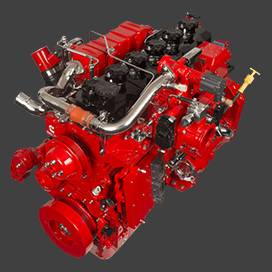Dec . 23, 2024 00:53 Back to list
Do New Brake Drums Require Turning Before Installation or Use
Do New Brake Drums Need to Be Turned?
When it comes to vehicle maintenance, brake systems are one of the most critical components for safe operation. This includes not only the brake pads and shoes but also the brake drums. One common question that arises among drivers and mechanics alike is “Do new brake drums need to be turned?”
Before we delve into that question, it’s essential to understand what a brake drum is and its function within the braking system. Brake drums are the components that house the brake shoes in drum brake systems. When the brake pedal is pressed, the brake shoes expand against the inner surface of the brake drum, creating friction that slows down or stops the vehicle.
New Brake Drums Are They Perfect Right Away?
The term “turning” refers to the machining process of grinding or cutting the surface of a brake drum to ensure it is perfectly smooth and free of any imperfections. This process is often performed on old or worn brake drums to restore them for optimal performance. However, many people believe that new brake drums, right out of the box, do not require this process.
In most cases, new brake drums are manufactured to precise specifications. They should come with a smooth surface straight from the factory, eliminating the need for turning. Most reputable manufacturers understand the importance of quality control and the critical role that brake drums play in vehicle safety. Thus, they typically produce drums that are ready for immediate installation.
Situations that May Necessitate Turning
While new brake drums often do not need to be turned, there are exceptions. Here are a few scenarios where turning may be required
do new brake drums need to be turned

1. Manufacturing Defects Despite tight quality controls, there are instances where a new brake drum may have minor defects, such as an uneven surface or warping. If such imperfections are detected during installation or visual inspection, turning the drum can correct these issues.
2. Installation Errors Improper installation or incorrect torquing of the wheel can lead to warping of the brake drum. In such cases, even a new drum might benefit from being turned to ensure it operates smoothly.
3. Heat Damage If the vehicle has been driven aggressively or the brakes have been overheated, new drums could be susceptible to deformation. If you notice noise or vibration during braking, it may indicate that turning the drums is necessary, regardless of their new condition.
4. Brake Shoe Wear If new brake shoes are installed without turning drum surfaces that might be slightly uneven, it can lead to uneven wear of the shoes over time. This can reduce braking efficiency and increase noise levels, hence turning the drum may help in ensuring better contact with the new shoes.
Conclusion
In summary, new brake drums typically do not need to be turned before installation. However, it's essential to perform a thorough inspection prior to installation to catch any potential issues like surface defects or warping. If there are signs of damage or irregularities, then turning the drum may be necessary, even for new parts.
The bottom line is that the performance and safety of your vehicle depend heavily on the braking system. Always ensure that brake components, whether new or refurbished, meet the necessary specifications. Consulting with a professional mechanic can provide additional assurance and help you make the best decisions regarding brake maintenance. Keeping your braking system in peak condition is not only crucial for the longevity of your vehicle but for the safety of you and everyone on the road.
-
Explore Japan: Ultimate Travel Guide & Authentic Experiences
NewsAug.19,2025
-
Your Brake Drum Man: Premium & Reliable Brake Drums for Sale
NewsAug.18,2025
-
ROR Web Development: Build Fast, Scalable, Secure Apps
NewsAug.17,2025
-
Scania Brake Drums: OEM Quality for Optimal Safety & Durability
NewsAug.16,2025
-
R.V.I: Advanced Remote Visual Inspection for Precision
NewsAug.15,2025
-
Discover HYUNDA: Innovative Vehicles, Equipment & Solutions
NewsAug.14,2025
